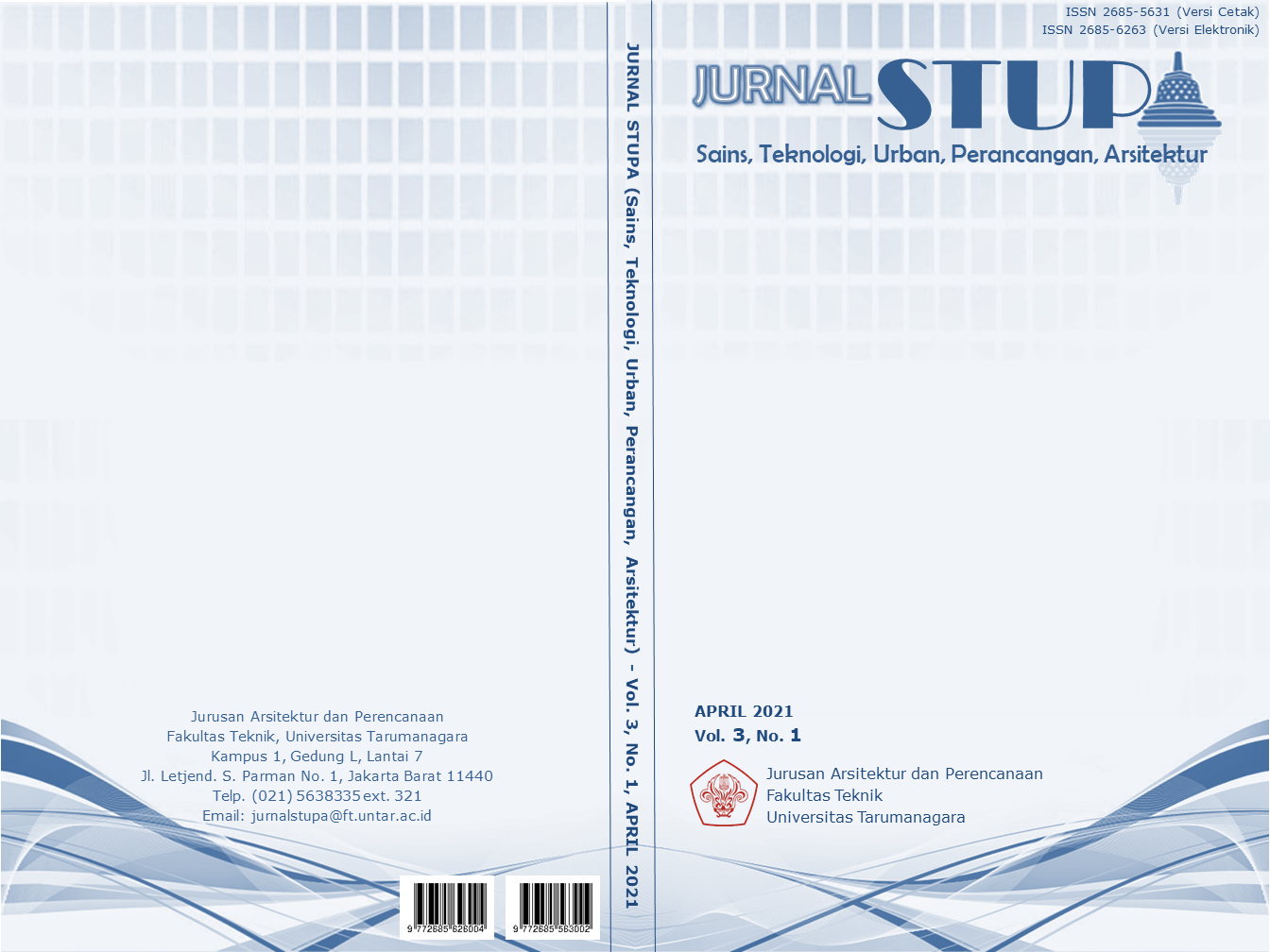STASIUN RELAKSASI
Main Article Content
Abstract
Jakarta is a city that is included in the 150 most stressful cities in the world and Jakarta is in the 6th position as the most stressful city in the world. Stress has become an inherent issue in big cities and Jakarta is one of these cities. People in Indonesia, especially in Jakarta, still underestimate mental health. Because people who experience and feel stress do not have the right place to treat stress. So that the impact of untreated stress can have a negative impact on the individual and the people around. By providing a place to pay more attention to stress problems in Jakarta, it is hoped that people will no longer be taboo in consulting and treating stress problems experienced by someone. So that the relaxation station is a program that is offered to provide a healing process for people who are experiencing stress, especially in the city of Jakarta, so that people who undergo the healing process at this relaxation station are expected to achieve mental and physical relaxation and can reduce significant stress levels for their visitors. The use of the biophilic design method in this design is very important in healing to reduce stress levels in a person. Apart from using the biophilic design method, the concept of architecture and the sense is also used where this concept involves the human senses to participate in reducing stress mentally and psychologically.
Keywords: Biophilic Design; Healing; Relaxation; Stress
Abstrak
Jakarta merupakan kota yang termasuk ke dalam 150 kota paling stress di dunia dan Jakarta berada di urutan ke 6 sebagai kota paling stress di dunia. Stress sudah menjadi sebuah isu yang melekat di perkotaan besar dan jakarta salah satu kota tersebut. Masyarakat di Indonesia khususnya di Jakarta ini masih memandang kesehatan mental secara sebelah mata. Karena orang-orang yang mengalami dan merasakan stress tidak memiliki wadah yang tepat untuk mengobati rasa stress tersebut. Sehingga dampak stres yang tidak diobati dapat berdampak buruk terhadap individu maupun orang-orang disekitarnya. Dengan memberikan wadah untuk lebih memperhatikan masalah stress di Jakarta ini, diharapkan orang-orang tidak lagi tabu dalam mengkonsultasikan dan mengobati masalah stress yang di alami seseorang. Sehingga stasiun relaksasi merupakan program yang ditawarkan untuk memberikan proses healing kepada orang-orang yang mengalami stress khususnya di kota Jakarta sehingga orang yang menjalani proses healing di stasiun relaksasi ini diharapkan akan mencapai relaksasi secara pikiran dan fisik dan dapat mengurangi tingat stress yang signifikan untuk para pengunjungnya. Penggunaan metode biophilic design pada perancangan ini sangat berperan penting dalam healing untuk menurunkan tingkat stress pada seseorang. Selain menggunakan metode biophilic design di gunakan juga konsep architecture and the sense dimana konsep ini melibatkan indra dari manusia untuk ikut dalam menurunkan stress secara mental dan psikologis.
Article Details
References
Browning, W.D., Ryan, C.O., Clancy, J.O. (2014). 14 Patterns of Biophilic Design. New York: Terrapin Bright Green llc.
DuBose, J. MacAllister, L., Hadi, K., Sakallaris, B. (2018). Exploring the Concept of Healing Spaces. Health Environments Research & Design Journal, 11(1). 43-56.
Duerk, D.P. (1993). Architectural Programming: Information Management for Design. New York: Van Nostrand Reinhold Company
Firdausi, F.S., dan Prasetyo, E.Y. (2017). Pendekatan Transprogramming untuk Mewujudkan Efisiensi Ruang berdasarkan Perubahan Aktivitas dan Waktu. Jurnal Sains dan Seni Pomits 6(2). Pp. 2337-3520.
Heidegger, M. (1999a). Building Dwelling Thinking. In David Farrell Krell (Ed.), Basic Writings Martin Heidegger (pp. 347-363). London: Routledge.
Pallasmaa, J. (2005). The Eyes of the Skin: Architecture and the Sense. 3rd Edition. Chichester: John Wiley & Sons LTD.
Schaller, B. (2012). Architectural Healing Environments. Architecture Senior Theses. Paper 62. http://surface.syr.edu/architecture_theses/62



